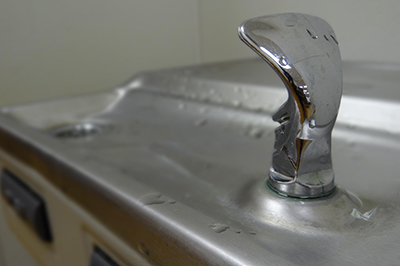EPA, 2015.
EPA’s IAQ Tools for Schools guidance has been implemented successfully in tens of thousands of schools nationwide. The Framework for Effective School IAQ Management synthesizes the accumulated learning of more than 800 schools involved in a national survey of IAQ management practices; 200 applicants for IAQ Tools for Schools awards; and in- depth interviews, site visits and analysis of five faculty school districts. The Framework provides a common language
to describe the drivers of IAQ program success; detailed guidance on the proven strategies, organizational approaches, and leadership styles that are fundamental to program effectiveness; and a clear vision of the pathway to school IAQ excellence. Its highly flexible and adaptable structure allows any school, regardless of location, size, budget or condition, to use the Framework to launch, reinvigorate and sustain an effective IAQ management program.
The Framework: Key Drivers
The Six Key Drivers are the essential elements of effective and enduring IAQ management programs. Applying a cycle of continuous assessment, planning, action and evaluation, the Six Key Drivers work synergistically to deliver effective school IAQ management programs. The Six Key Drivers are:
- Organize for success;
- Communicate with everyone, all the time;
- Assess your environments continuously;
- Plan your short- and long-term activities;
- Act to address structural, institutional and behavioral issues, and
- Evaluate your results for continuous improvement.The Framework: Technical SolutionsThe Six Technical Solutions define the most common issues that schools need to address to effectively manage IAQ risks. When addressed systematically
and aggressively, an IAQ program that focuses on the Six Technical Solutions will deliver a healthier school environment. The Six Technical Solutions are grounded in the IAQ Tools for Schools Action Kit, the Center for Disease Control’s School Health Policies and Programs Study and the management practices of leading school IAQ programs.








